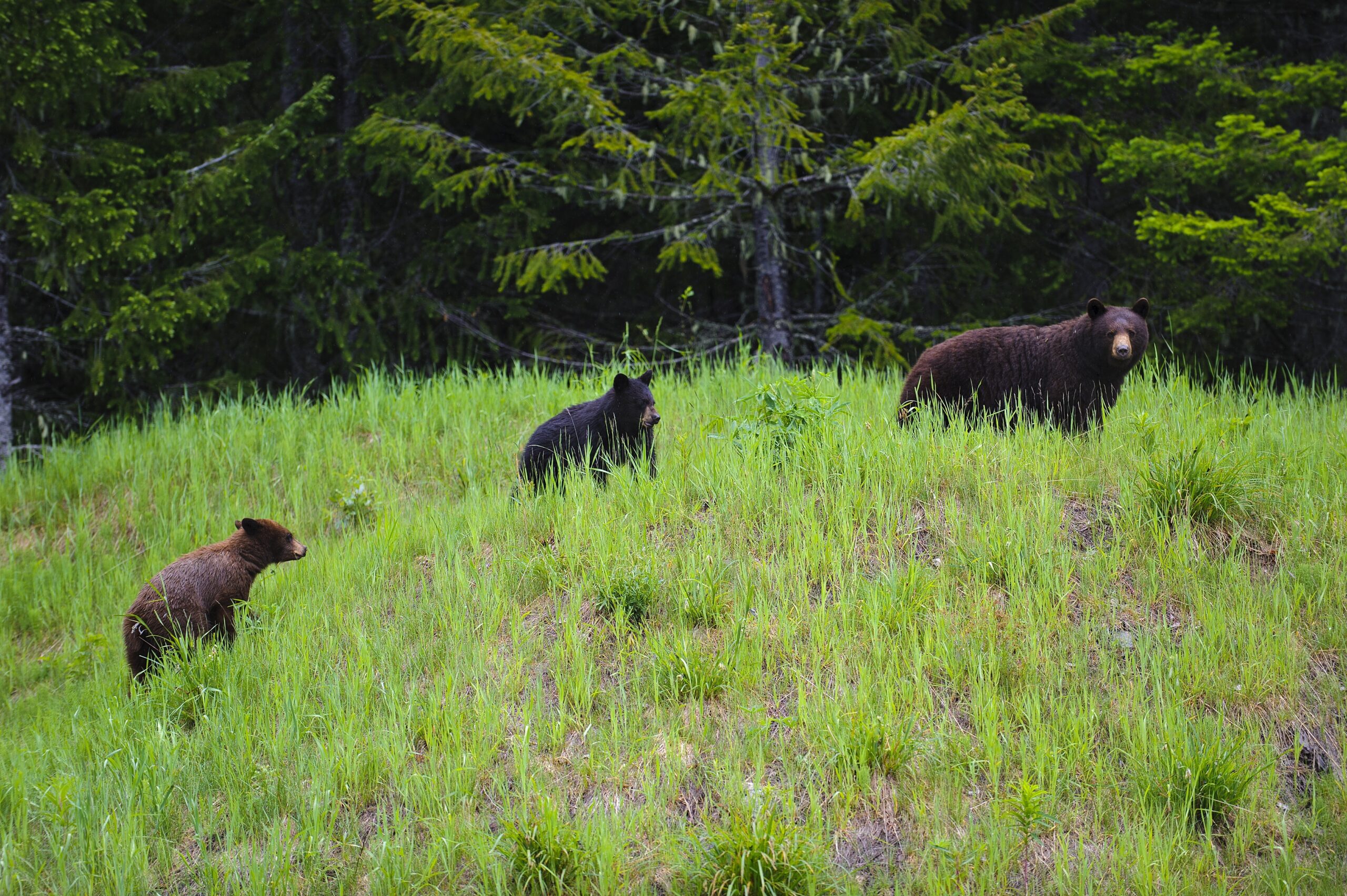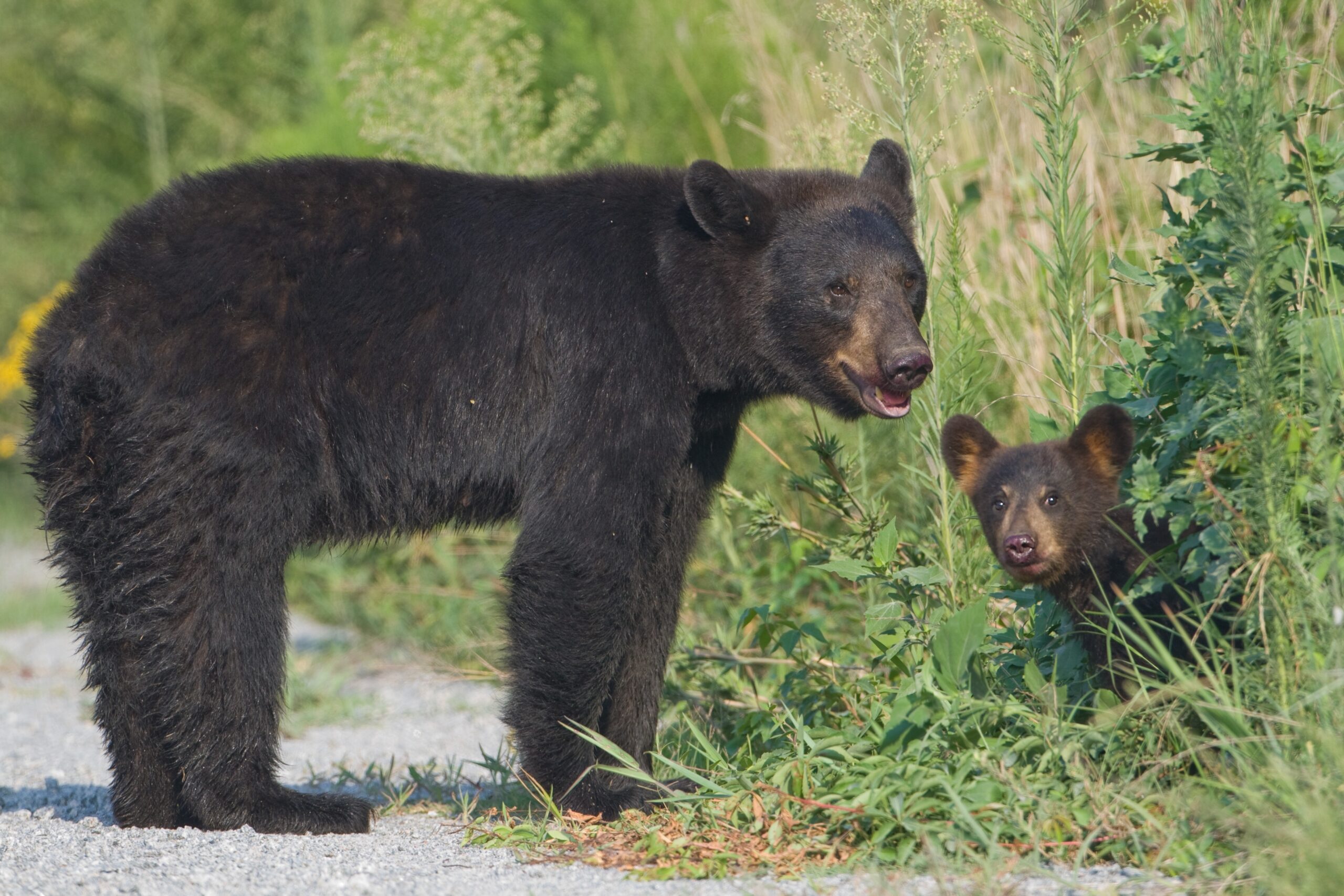Bear Safety in the Smoky Mountains
By now, you’ve probably seen videos of people getting up-close to bears, bears breaking into cars or stealing food off your cabin porch. While the videos online may be funny, it should also serve as a reminder that bears in the Smoky Mountains are no joke. Sure, they’re beautiful and quite photogenic, but there are some bear safety steps you should take if you ever encounter one when in the Smoky Mountains.
Black Bears in the Smokies
Did you know that the Great Smoky Mountains National park is one of the largest protected areas in the eastern portion of the country where black bear can live in the wild? There are roughly 1,500 bears in the Smokies which equals about 2 per square mile. The average adult male weighs in around 250 pounds and females tip the scales around 100 pounds.
I See A Bear!!!
If you spot a bear in the park, it’s quite thrilling. You’ll reach for your camera and start snapping as many pictures as you can. While you’re caught up in the moment, remember that it can also be a dangerous situation. Bear behavior can be very unpredictable, they are a “wild” animal after all. While most encounters will end without incident, there have been times, although rare, that bear attacks occur. Your behavior can play a key role in calming the situation, should one of these rare attacks happen.

Don’t Tempt the Bear
The best way to reduce your chance of an unwanted bear encounter…is avoiding the encounter all together! Be sure to keep your distance and do not try to “surprise” the bear. Odds are, the bears will try to avoid you, so don’t get their attention and draw them in. Here are some more tips on how to avoid an encounter with black bears in the Smokies.
- If hiking, try to hike in groups. The more people hiking, the louder you will be and the stronger the scent. The more noise and stronger odor, will intimidate the bear to stay away. They will notice you before you notice them.
- Keep your pack on at all times. If you are spotted in the distance, and the bear can smell your food, sitting the food down may be a sign for the bear to approach. Also, your pack can act as a defense should an attack occur.
The Bear Sees Me…Now What?!
If the bear spotted you and is now very interested in you, there are some strategies you can try that will help deescalate the situation.
 First things first, pick up small children immediately and do everything possible to keep them calm and prevent them screaming or crying.
First things first, pick up small children immediately and do everything possible to keep them calm and prevent them screaming or crying.
- Let the bear know you’re there in a calm tone. Slowly wave your arms, but stand still and stand your ground. If the bear stands on it’s hind legs, don’t panic. Most bears stand when they’re curious.
- Remember, most bears do not want to attack you, they just want to be left alone. The bear might react by salivating, growling, clamping their jaws shut or even laying their ears back. Again, don’t panic. Many times it’s just a scare tactic. Just continue to talk in a low voice. The last thing you want to do is scream or make any quick movements.
- If possible, move slowly to higher ground and make yourself look as large as possible. With that being said, do NOT climb a tree. Black bears can climb trees.
- Never, ever, try and feed the bears. That is how attacks occur and this will only encourage the bear and make the situation worse.
- If you see a female with cubs, NEVER put yourself between the mother and her cubs. If the mother bear thinks you are trying to get to her cubs, this could greatly escalate the chance of an attack.
Nothing Is Working & the Bear Is Approaching
If all else fails and the bear is persistent and continues to follow you, here’s what to do next.
- Slowly leave the area. If this isn’t possible, wait until the bear moves away. Don’t block the only exit for the bear.
- If the bear tries to follow you, stand your ground. If the bear gets closer, begin to talk loudly or shout. Make yourself as big as possible.
- If you’re with a group of people, act as a group. Make yourselves look as large as possible.
- Don’t turn and run away from the bear
- Don’t leave food for the bear. This only encourages future behavior.
- Lastly, if you are attacked…DO NOT PLAY DEAD. Try to get away to a secure place. A building or car. If you are in the middle of the woods and an escape isn’t possible, do everything you can to fight back and use nearby objects as weapons. Focus on the bear’s face and muzzle area.
You Can Help Reduce Encounters
Believe it or not, bears aren’t naturally drawn to humans or our food. Their sense of smell is geared more towards insects, berries and nuts but they can be enticed by the “new” smells of people food. Remember to dispose of all trash and food scraps in bear proof containers, or simply take the trash and scraps with you. If you see another visitor attempting to feed the bears, notify a park official immediately by calling 865-436-1230 or stop by the Visitor Center.


